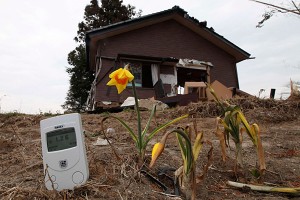Tokyo Under Fire For Plans To Speed Return Of Fukushima Evacuees

via DW / July 21st, 2015 / In a bid seen by critics as aiming to speed up reconstruction, the Japanese government is preparing to declare sections of the evacuation zone around the crippled Fukushima nuclear plant a safe place to live. The ruling coalition led by Prime Minister Shinzo Abe intends to revoke many evacuation orders by March 2017, if decontamination progresses as hoped, meaning that up to 55,000 evacuees could return to the homes they abandoned more than four years ago.
Moreover, Tokyo recently announced that the 7,000 residents of Nahara, a town in one of the seven Fukushima municipalities completely evacuated following the nuclear crisis, will be able to return home permanently from September 5. How many residents of the settlement, which lies just 20 kilometers (12 miles) south of the plant, will return, however, remains unclear as many still have mixed feelings, according to a recent poll.
On March 11, 2011, a magnitude-9 earthquake and tsunami struck northeastern Japan, causing massive devastation and ultimately sending three reactors at the Fukushima Daiichi nuclear plant into meltdown. It was the worst atomic accident in a generation. Hundreds of thousands of people were forced to flee amid fears of rising radiation, with more than 72,500 people – who used to live within a 20-kilometer radius of the plant – still living in temporary housing units.
Massive clean-up operation
In the meantime, government-run decontamination efforts are underway in 11 cities, with at least 20,000 people involved in the clean-up, according to the environment ministry. In the mammoth task, workers try to remove tons of contaminated surface soil, plants and leaves, placing them in bags or in one of the nearly 800 temporary outdoor storage facilities that have been set up across the disaster zone.
The operation also includes parts of the district of Iitate, which covers more than 200 square kilometers, and was one of the most contaminated areas following the March 2011 disaster. Since 2014, tens of thousands of workers have been attempting to reduce radiation levels in some parts of Fukushima prefecture, including in Iitate.
Mounting concerns
But while organizations such as the International Atomic Energy Agency (IAEA) say such efforts have contributed to reducing radiation levels, many problems remain, especially when one considers the disposal of contaminated water in the plant and the fact that anyone living in the surrounding areas would be exposed to radiation levels of more than 20 millisieverts (mSv) a year.
The globally-accepted limit for radiation absorption is 1mSv per year, although the IAEA says anything up to 20mSv per year poses no immediate danger to human health. However, various studies have shown health impacts from exposure to lower levels. Moreover, critics argue that only residential areas are being cleaned in the short-term, and the worst-hit parts of the countryside are being omitted or are impossible to be decontaminated, like dense forests and mountains.
This development has raised concerns among environmentalist groups such as Greenpeace, who fear that radioactive contamination in Iitate district is so widespread and at such a high level that it will be “impossible for people to safely return to their homes.”
SOURCE: DW